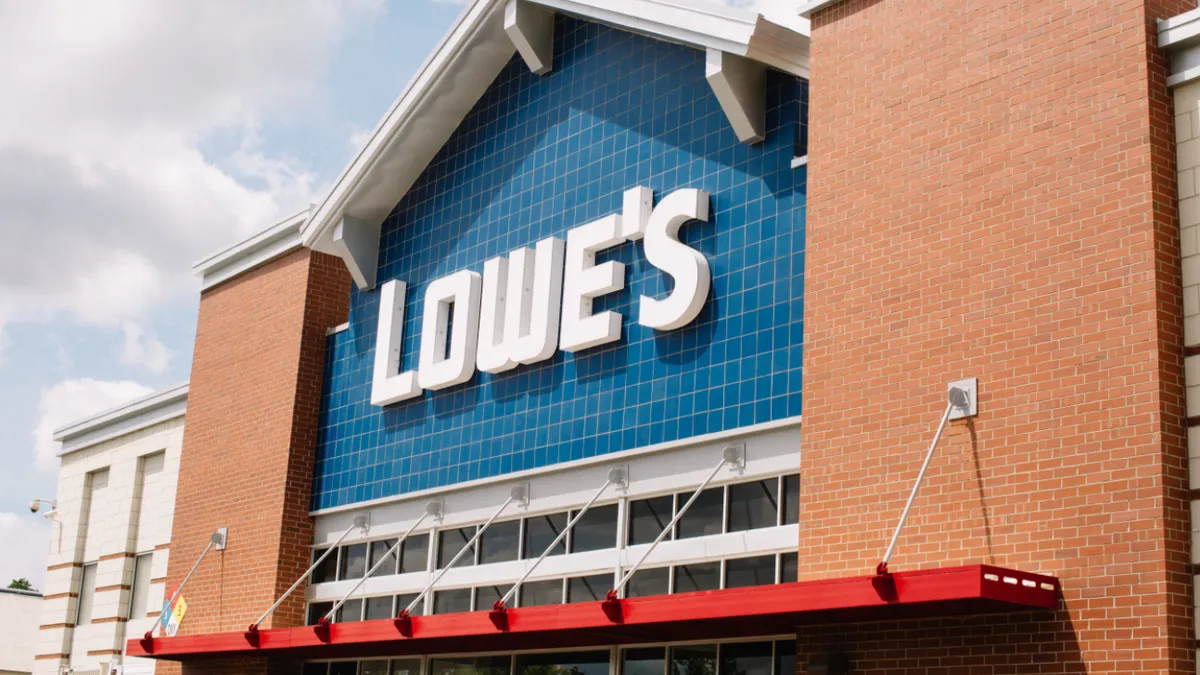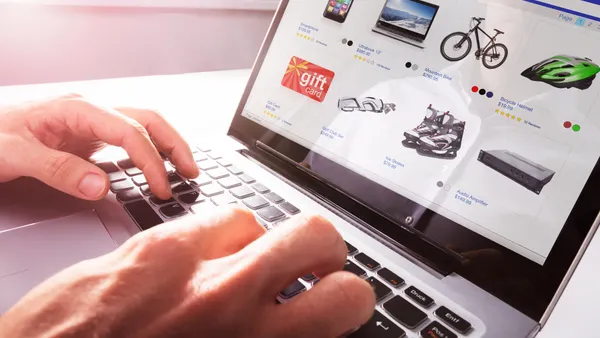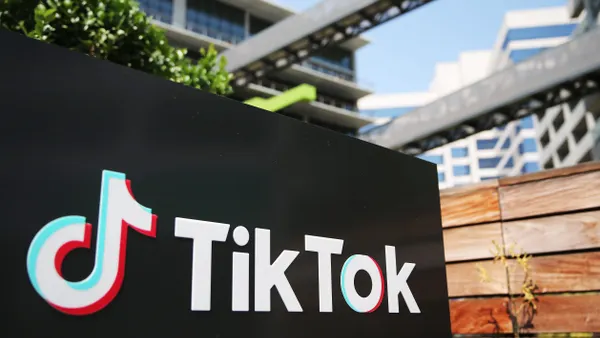NRF — Lowe's is entering 2021 coming out of a banner year. At a time when much of the industry has faced sales declines among other struggles, the home improvement sector has become an unlikely winner.
Brought on by the unusual circumstances of the pandemic — with many spending more time in their households — the category has seen increased demand from consumers looking to invest more into their homes.
Lowe's in its most recent quarter reported net sales rose 28.3% to $22.3 billion, while its same-store sales increased 30.1%. Comparable sales in the U.S. rose 30.4% during the same period. Its online sales, however, skyrocketed over the past year: Website sales increased some 80%, 135% and 106% in its first, second and third quarters, respectively.
Initiatives put in place prior to the pandemic helped support the retailer's digital business as more consumers shifted spending online. Even before current CEO Marvin Ellison took the helm back in 2018, the retailer has been making investments in tech, including the development of mobile apps using AR. But his arrival also came as Lowe's was producing lackluster sales in comparison to its larger rival, The Home Depot. The North Carolina-based retailer also faced a number of technological missteps, including data breaches, notably during the all-important Black Friday holiday in 2017 and 2018.
"Two years ago, we couldn't even offer a customer an e-receipt," Ellison said during NRF's virtual Big Show conference. "As recent as last year, our e-commerce platform was on a decade-old infrastructure. Think about your computer today versus your computer 10 years ago, and that's the equivalent of what a multibillion dollar e-commerce platform was sitting on."
Ellison over the past several years has worked to right a number of missteps in the company's online business. The company in 2019 said it was investing half a billion dollars annually until 2021 to transform the technical makeup of its business, which included opening a tech center in Charlotte, North Carolina, and hiring up to 2,000 tech associates.
"When I think about operational excellence in retail, I think about the analogy of building a home where it starts with a really stable and solid foundation," Ellison said. "If you don't have a robust labor management system, if you don't have a strong, stable IT infrastructure, if you don't have an e-commerce platform that gives you agility, if you don't have products that speak to the customers from a value quality perspective, it's really difficult to be effective in retail, whether it's 2021 or 1921."
In response to the pandemic, the retailer over the summer rolled out an augmented video chat tool dubbed "Lowe's for Pros JobSIGHT," which allowed professionals to virtually visit homeowners and business clients.
In Ellison's view, however, the most important innovation the retailer can pursue is one that the customer never sees, but rather experiences.
"The most effective technology is technology that no one sees, is always behind the scenes, is always behind the curtain and all the customer knows is they've made this really simple," Ellison said. "Our innovation is focused on making things simple, without putting it in front of the customer or the associates, and that's what good innovation looks like."
To that end, the retailer in September announced it would roll out pickup lockers in most metro areas ahead of the Black Friday holiday, to help with fulfillment of online orders.
"Everything we try to do is not about our competition, is not trying to replicate or predict what's going to happen in the macro environment, is really more about being customer-centric and asking the questions, 'What do we do as a company that will give the customer the ability to shop anywhere they choose?'" Ellison said.
"If they want to have a traditional in-store transaction, how do we execute on that and do it in a way where it's flawless? It is simple, we take friction points out. If a customer wants to buy online, pick up in store; buy online, pick up in a locker; buy online, pick up curbside," he added. "As we think about all the ways that customers desire to shop and all the ways that customers will probably shop in the future, that really dictates how we go to market internally and determine our capital span, and our innovation strategy."














